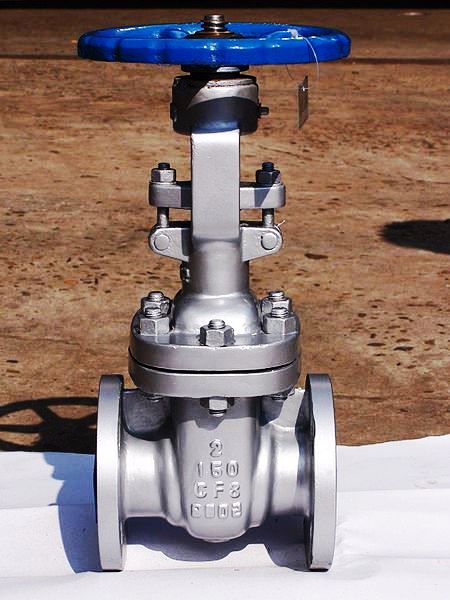The gate valve, as shown in figure, is a valve that opens by lifting a round or rectangular gate/wedge out of the path of the fluid. The distinct feature of a gate valve is that the sealing surfaces between the gate and seats are planar, so gate valves are often used when a straight-line flow of fluid and minimum restriction is desired. The gate faces can form a wedge shape or they can be parallel.
Gate valves are primarily used to permit or prevent the flow of liquids, but typical gate valves shouldn’t be used for regulating flow, unless they are specifically designed for that purpose. Due to their ability to cut through liquids, gate valves are often used in the petroleum industry. For extremely thick fluids, a specialty valve often known as a knife valve is used to cut through the liquid. When open, the gate valve’s flow path is enlarged in a highly nonlinear manner with respect to percent of opening. This means that flow rate does not change evenly with stem travel.
Also, a partially open gate disk tends to vibrate from the fluid flow. Most of the flow change occurs near shutoff with a relatively high fluid velocity causing disk and seat wear and eventual leakage if used to regulate flow. Typical gate valves are designed to be fully opened or closed. When fully open, the typical gate valve has no obstruction in the flow path, resulting in very low friction loss.
Gate valves are characterized as having either a rising or a non-rising stem. Rising stems provide a visual indication of valve position because the stem is attached to the gate such that the gate and stem raise and lower together as the valve is operated. Non-rising stem valves may have a pointer threaded onto the upper end of the stem to indicate valve position, since the gate travels up or down the stem on the threads without raising or lowering the stem. Non-rising stems are used underground or where vertical space is limited.
Bonnets provide leak proof closure for the valve body. Gate valves may have a screw-in, union, or bolted bonnet. Screw-in bonnets are the simplest, offering a durable, pressure-tight seal. Union bonnets are suitable for applications requiring frequent inspection and cleaning. They also give the body added strength. Bolted bonnets are used for larger valves and higher pressure applications.

